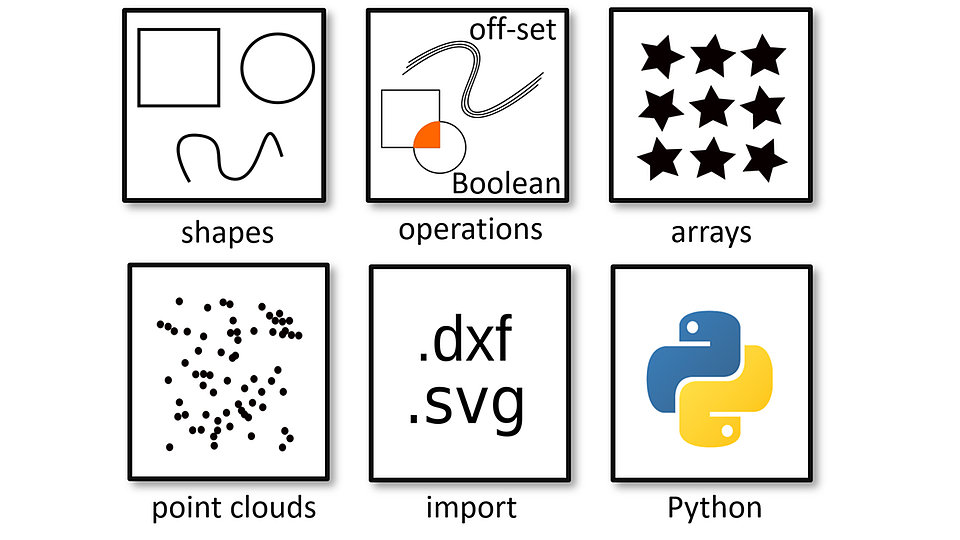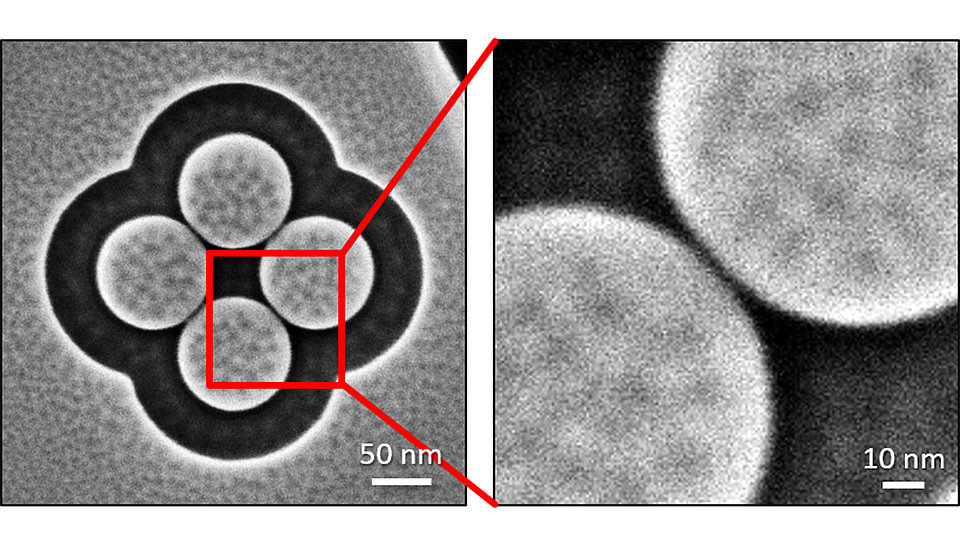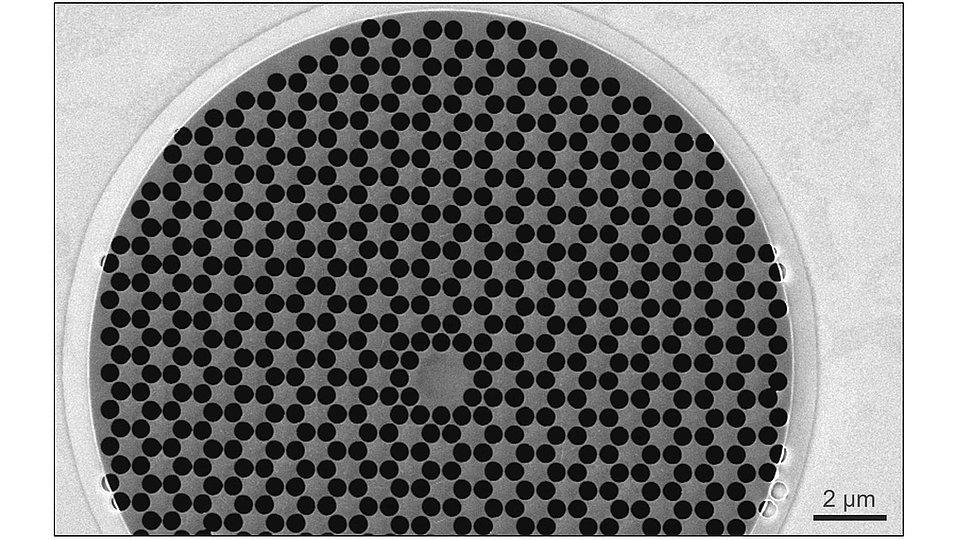Patterning toolbox FIB-o-mat – exploiting the full potential of focused ion and electron beams for nanofabrication
Fig. 2: Secondary electron He ion microscopy images of gold plasmonic tetramer antenna with ultimate gap resolution achieved by He ion beam patterning.
Future breakthroughs in nanotechnology will rely on the ability to fabricate materials and devices by design, i.e. to tailor both material properties and device geometries according to a sophisticated blueprint. Direct writing using focused beams of ions or electrons is a powerful technique not only for rapid-prototyping of novel device components but also for mask-less processing of delicate nanostructures and local modification of materials. To achieve an optimal result in the patterning process, a full control over the beam path including its rasterization is necessary.
Patterning with an ion beam is a digital process in which the beam spot dwells for a defined time at a certain location and is then shifted by a defined distance (‘pitch’) to dwell again. This beam path can be created as a consequence of a high-level geometry that is rasterized following a pre-defined routine. Therefore, FIB-o-mat provides various geometries including their Boolean combinations together with all possible rectangular and annular rasterization schemes. For complex geometries however, the high-level rasterization approach may lead to artifacts in narrow regions or for large curvatures. Here, FIB-o-mat offers a low-level approach where the beam path is generated by curve off-setting for any given input geometry to achieve the best patterning fidelity.
The functionalities of the Python-based toolbox FIB-o-mat are showcased for He ion beam processing of three different material systems. The magnetic properties of a Co/Pt multilayer were locally modified using the high-level beam path generation combined with automation via stage control. Plasmonic tetramer antennas were cut from single-crystalline gold on glass, demonstrating the ultimate patterning resolution of the focused He ion beam with gap sizes down to 3 nm. Here, apart from the low-level beam path generation, a local dose optimization had to be carried out. Finally, suspended single layer graphene was patterned into simple trampoline resonators but also complex phononic crystal structures using the low-level beam path generation and automation via stage control.
FIB-o-mat has a fully documented modular structure, such that it is easy to use and easy to extend. In its current version (https://pypi.org/project/fibomat/), it provides high-level pattern creation, low-level beam path generation, as well as optimization and automation tools for He ion beam machining. The aim is to extend FIB-o-mat such that the tools can be used with microscopes of any manufacturer, covering ion beam machining with a variety of ions. In addition, the toolbox can be used for any type of two-dimensional parametric modeling, such as defining masks for lithography. This allows to create masks and patterns for different sample processing steps within the same software, thus streamlining the design process and reducing the error rate.
This work was supported by the German Research Foundation (DFG) under grant no. HO 5461/3-1 and of the Federal Ministry of Education and Research within the project ‘EPRoC’ under grant no. 03SF0565. The ion beam patterning was performed in the Corelab Correlative Microscopy and Spectroscopy at Helmholtz-Zentrum Berlin. Furthermore, we would like to highlight our lead participation in the EU Cost Action CA 19140 ‘FIT4NANO’, https://www.fit4nano.eu.
Publications
V. Deinhart, L. Kern, J. N. Kirchhof, S. Juergensen, J. Sturm, E. Krauss, T. Feichtner, S. Kovalchuk, M. Schneider, D. Engel, B. Pfau, B. Hecht, K. I. Bolotin, S. Reich and K. Höflich, "The patterning toolbox FIB-o-mat : Exploiting the full potential of focused helium ions for nanofabrication", Beilstein J. Nanotechnol. 12, 304 (2021).
J. N. Kirchhof, K. Weinel, S. Heeg, V. Deinhart, S. Kovalchuk, K. Höflich, and K. I. Bolotin, "Tunable graphene phononic crystal", Nano Lett. 21, 2174 (2021).


